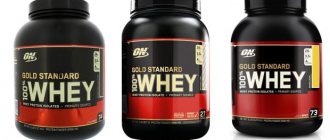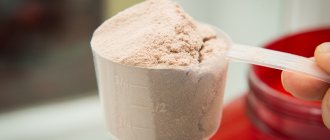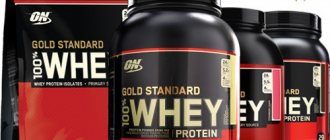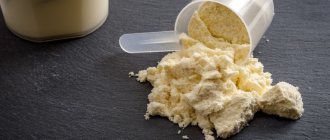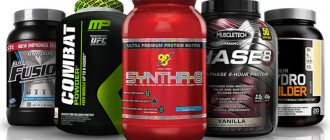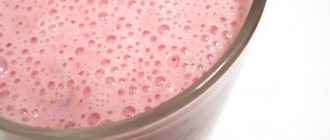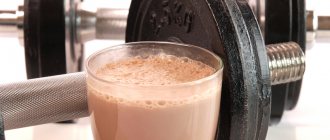Whey protein is key to muscle building and recovery after a workout, and it can also help you lose weight. You may have taken a whey protein supplement before, but did you know that there are several types of whey protein that offer different benefits?
Whey, depending on your goals, can help you optimize the results of the hard work you put in in the gym. Whey protein has many beneficial properties, especially when taken at the right time and in the right dosage.
It is one of the most commonly used nutritional supplements taken for muscle recovery and muscle building. Whey is considered a complete protein, meaning it contains all nine essential amino acids.
The great popularity of this supplement is confirmed by research results - scientists have identified the wide amino acid composition of whey protein and found that it is digested and absorbed by the body quickly and easily.1 Whey protein has a number of advantages and very limited possible side effects compared to other types of proteins. This makes it one of the most popular nutritional supplements.
In this article we will cover the following questions:
- What is whey protein?
- Three types of whey protein
- Beneficial features
- Side effects and dosage
Whey Protein Composition
The source of raw materials for whey protein is natural cow's milk, purified from impurities, water and fat. The concentrated protein mixture is obtained from whey, which is a by-product of milk curdling during cheese making.
The percentage of protein in the composition depends on the price of the product. The lower the cost of protein, the more sugar, flavor enhancers and other artificial additives it contains.
Forms of serum production
Protein, in the form that is familiar to us and in which we buy it, is already a technologically regulated whey. During the manufacturing process, it gradually gets rid of contaminants, fat and carbohydrates. There are various types of production, which differ both in the type of whey processing and in the financial costs of this process.
Types of whey processing [1]:
- filtration
- microfiltration
- ultrafiltration
- ion exchange
- hydrolysis
Types of Whey Protein
There are 3 main forms of whey protein: concentrate, isolate and hydrolysate. The main difference between them is the method of obtaining and processing.
- The concentrate contains 70–80% protein. It includes a diverse amino acid composition, fats and lactose (milk sugar). Most quickly absorbed by the body. People with individual lactose intolerance should choose a different form of whey protein.
- The isolate contains more than 90% protein. It has less nutrients, fat and lactose than concentrate.
- Hydrolyzed protein (hydrolysate) is the most purified form of protein. It is absorbed by the body faster than others. Strongly increases insulin levels: 25–40% more than isolate.
Fast and slow protein
The forms of protein discussed above are quickly absorbed by the body. Casein is obtained from the “waste” of whey isolate production. It is a complex protein found in cow's milk. The rate of its absorption is 15–20% slower.
There is an opinion that to obtain the maximum effect, casein is recommended to be taken before bed. However, at the moment this is not confirmed by scientific research and is a marketing gimmick.
Beneficial and harmful properties of whey protein
Whey protein is a healthy and natural product that is consumed by people all over the world. It helps build muscle mass, develop energy, physical strength and endurance with regular exercise.
What is the mechanism of whey's effect on muscle growth?
- It contains a large percentage of proteins and amino acids, which are necessary for muscle growth.
- The amino acid leucine is part of protein. It regulates muscle protein synthesis at the genetic and molecular level.
- The release of anabolic hormones (in particular insulin) is enhanced, which stimulates muscle growth.
- Body cells absorb isolate much faster than other types of protein.
Consuming whey protein also has positive health effects. It lowers blood pressure and blood sugar levels, helps cope with stress and depression.
Whey protein contains the amino acid cysteine, which increases levels of the antioxidant glutathione in the body. Experiments by scientists have proven an increase in the life expectancy of laboratory mice with regular consumption of whey protein. The isolate strengthens the immune system, reduces symptoms in patients with hepatitis, and increases the mineral density of skeletal tissue.
Side effects
Consuming whey protein in large dosages can cause digestive upset: nausea, intestinal cramps, flatulence and diarrhea.
Whey protein for weight loss
Protein speeds up the body's metabolism, which helps you lose weight. When you consume whey protein, your metabolism increases by 70-100 calories per day and your appetite decreases. Low calorie content and a feeling of satiety are due to the fact that proteins in the body take much longer to break down than carbohydrates and fats.
Scientific research has proven that consuming protein in combination with exercise promotes weight loss and muscle growth. Consuming protein at 25% of your total daily calories reduces food cravings by 60%.
Contraindications for use
You should consult your doctor before using it if you have been diagnosed with digestive system diseases.
Some people may be allergic to the serum. If you feel unwell after taking whey protein concentrate, you should reduce the dosage, try isolate and hydrolyzate, or stop using it. Replace protein with products with a high concentration of protein in the composition.
You should completely avoid taking whey protein:
- For renal failure or other kidney diseases.
- Individual intolerance to certain components of whey concentrate (for example, lactose).
- Genetic predisposition to kidney disease.
Oatmeal, oat bran and fiber-rich foods
Oatmeal contains soluble fiber, which lowers low-density lipoprotein (LDL) levels, the so-called “bad” cholesterol. Soluble fiber is also found in beans, apples, pears, barley and prunes.
Soluble fiber can lower the amount of cholesterol in the blood. 5-10 grams or more of soluble fiber per day reduces total cholesterol and LDL cholesterol. One and a half cups of oatmeal contains 6 grams of fiber. If you add some fruit, such as banana, to your porridge, you'll get about 4 more grams of fiber. For variety, try unprocessed oats or rolled oats containing oat groats or oat bran.
Instructions for taking whey protein
For optimal muscle gain, it is necessary to take whey protein in the correct dosages and according to established rules. The average dose is 1–2 tablespoons (approximately 25–50 grams) per day. Taking whey protein may not have the desired effect if your diet contains large amounts of protein foods.
Whey protein is most effective when consumed during physical activity. Fitness instructors recommend taking it a few minutes before or immediately after a workout.
Recent scientific research has proven that when exercising regularly, the most important thing is the amount of protein consumed per day, and the timing of intake does not play a key role.
Recommendations
Taking protein will be pointless and can cause a number of side effects if you approach it haphazardly. Pay attention to the following tips:
- Research the composition of whey protein before purchasing it. Cheap isolates usually contain low quality protein and questionable additives. Excessive flavorings, taurine, thickeners and sweeteners should not be contained here.
- Follow the protein intake schedule: there will be no immediate muscle growth - the first visible effect appears after 3-4 weeks. During this time, you need to get into a routine and bring protein intake to automaticity.
- Divide your main protein intake into two servings: drink the first half (20–30 grams) 30 minutes before training, and the second immediately after completion. This will provide you with extra energy to perform strength and cardio exercises.
- Mix protein with fruit or vegetable juices instead of water. The resulting mixture will contain fast carbohydrates, which will make it look like a gainer at a much lower cost.
- Follow a daily routine and sports diet with sufficient calories and nutrients.
- Use nutritional supplements that enhance the effects of whey protein. A few grams of creatine - and digestive enzymes will increase its strength several times by improving digestibility.
- Consume the product with food. Instead of taking casein (a slow protein) before bed, you can drink whey isolate or concentrate before dinner, which will increase its absorption time.
Features of using other protein-based supplements
It's not just protein powders on the market. You can also find protein in gainers, peanut butter and loaves.
Gainer is the main source of polypeptides for thin people and athletes who want to gain weight. It should be drunk before and after training, in some cases in the morning.
Peanut butter can be eaten 2-4 tablespoons per day, recommended during breakfast. The product goes well with banana and toast. Sweetness is allowed by nutritionists when losing weight, as it increases stamina, regulates fat metabolism and heals the skin.
How to take protein in special bars, chocolates or cookies? You can eat them whenever you want, as long as you don’t eat more than one treat in three hours. Traditionally, such delicacies are snacked in the morning before breakfast or in the afternoon after exercise.
How to Choose Whey Protein
First of all, you should pay attention to the protein content in the mixture. One serving (30 grams) contains an average of 22-26 grams of protein. Read the ingredients carefully and make sure that there are no components to which you are allergic.
A high-quality mixture should not contain the following additives:
- Sodium cyclamate (E952) is a substance of synthetic origin that is tens of times sweeter than sugar. It negatively affects the cardiovascular system, kidneys and metabolism. Banned in the USA and some other countries.
- Aspartame (E951) is a sugar substitute containing phenylalanine and methanol. These substances negatively affect amino acid metabolism, hormonal balance and brain biochemistry.
- Acesulfame potassium (E950) is a sweetener approved for use in several countries in the late 90s. The effect of the substance on the body and side effects have been poorly studied, so the safety of its use remains in question.
Review of the best proteins
Let's look at whey proteins that have successfully proven themselves among athletes.
Optimum Nutrition 100% Whey Gold Standard
Quality Standard: Received "Protein of the Year" and "Supplement of the Year" awards several times. Contains a proprietary blend of whey protein isolate, hydrolyzate and concentrate. The purest product with minimal impurities of lactose, cholesterol and fat. Each serving contains 24 grams of protein. Digestive enzymes have been added to the mixture for better protein absorption.
Cost - 3590 rub. for 2.27 kg.
Ultimate Nutrition 100% Prostar Whey Protein
Contains a set of all essential amino acids necessary for the body to build muscles during prolonged physical activity. The combination of numerous nutrients is ideal for those who enjoy an active lifestyle.
Cost - 2358 rubles. for 2.27 kg.
Rule 1 R1 Whey Blend
The composition includes 3 forms of whey protein: isolate, hydrolyzate, concentrate. The minimum content of simple sugars is 1 g per 33 g serving. It is recommended to be consumed during a diet, because it also contains a minimum of fat and lactose. By supplying your body with protein from this product, you will shorten the recovery period after intense training.
Cost - 3366 rubles. for 2.27 kg.
Syntrax Nectar
Pure whey protein isolate that will help you gain muscle mass faster. The composition is completely free of fats, carbohydrates, lactose, gluten and sugar. There are sweeteners based on natural juice. The mixture has a refreshing taste of nectar from fruits and berries.
Cost - 2248 rubles. for 957
Maxler 100% Golden Whey
The protein is made from different forms of whey protein. It is quickly absorbed and saturates muscles with valuable nutrients. Has a complete amino acid profile and prevents muscle catabolism.
Cost - 2860 rubles. for 2.27 kg.
BioTech USA Iso Whey Zero
High quality whey isolate free of gluten and lactose. It contains glutamine and BCAA to support recovery processes. The composition includes the amino acids citrulline and arginine, which improve the delivery of nutrients to the muscles.
Cost - 4498 rub. for 2.27 kg.
pros
- Whey contains 80% of milk minerals (Ca, Fe, Mg, P, K, Na, Zn, Cu, Mn, Se).
- Vitamins: A, C, B1, B2, B6, B12.
- Source of protein.
- The ratio of whey, lactose and protein is very similar to breast milk.
- It supports the functioning of the liver and digestive system.
- It helps intestinal peristaltic movement, promotes the balance of intestinal flora, thereby reducing intestinal complaints and improving well-being.
- It contains valuable essential and non-essential amino acids that are necessary for muscle development.
- It can help with allergies and weak immune systems.
- Useful for diseases and inflammation of the joints.
- Great when dieting, helping prevent muscle breakdown in addition to keeping your carb and calorie intake low.
